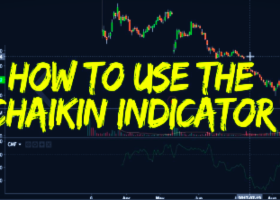
Australian Dollar to re-Assert Dominance on Sterling, But 'Manu-Friday' Data Key
The pound to Australian dollar's week-long recovery is in danger of being brought to an end as solid Australian fundamentals and a possible rebound in commodities could reinvigorate the Aussie side of the pair.
The GBP to AUD exchange rate has been correcting higher over recent days but these relatively small moves are unlikely to extend.
Rather, the pair’s longer-term down-trend remains intact as proved by the new 12-month lows of 1.8587, reached on March 23.
Once oversold momentum indicators have also pulled back into central zones, allowing for the possibility of a resumption of the down-trend in GBP/AUD.
The recent pull-back was probably the result of a retreat in the prices of major commodities as the Australia Dollar is highly sensitive to changes in commodity prices.
Iron Ore alone accounts for 20% of all Australian exports, with Coal another 10% and eight of the top ten exports all being commodities of one sort or another.
Higher commodity prices increase the total aggregate demand for Australian Dollars, thus increasing its value.
An increase in exports increases the current account, which is the balance of money coming in and out of a country, and because it quantifies demand is another gauge of a currency's worth.
The recent correction lower in commodities has been shallow so far, and it is probably just a temporary pull-back before the short-term up-trend resumes.
Analysts at ABN Amro think commodities have completely ‘bottomed out’ and the current recovery is a part of stronger cyclical up-trend:
“We think that commodity prices and currencies of commodity exporting countries have bottomed out. Higher commodity prices will initially improve the sentiment towards commodity exporters and their currencies. Later on, this will be felt in their economies,” says Georgette Boele, Co-ordinator of FX & Precious Metals Strategy at ABN Amro.
Therefore, the Aussie is also probably set to resume strengthening, with a break of GBP/AUD below its 1.8587 lows confirming a continuation down to a target at 1.8356; and AUDUSD continuing to PSL’s still-live target of 0.7739.
Copy signals, Trade and Earn $ on Forex4you - https://www.share4you.com/en/?affid=0fd9105
Australian Economic Data Strong
Commodities aside, the Aussie can rely on the solid grounding of its own economy for further support.
Recent Australian macro-economic data has been better-than-expected with the Unemployment rate falling back to 5.8% from 6.0% in February, surprising analysts who had not forecast such a deep contraction.
The Trade Balance in January showed the deep deficit caused by the tumble in commodities and China slowdown – China being a major importer of Australian natural resources – narrowing in January, due to a recovery in exports.
Australian Interest Rates to Continue Supporting AUD
If there was one stand-out message from the Reserve Bank of Australia's (RBA) March meeting minutes, it was that employment was key to determining RBA policy.
Given the improved Unemployment data the Reserve Bank of Australia have probably shifted their stance to a less pessimistic view, which means they are now much less likely to cut interest rates.
This is supportive of the Australian Dollar since interest rate cuts tend to weaken a currency as they present a less attractive proposition to foreign investors looking for a high interest returns on their investments.
Some analysts, most notably at Credit Suisse, have now dismissed the likelihood of any further interest rate cuts from the RBA in 2016, arguing there is little need for them since inflation has rebounded to close to the target range of 2.0%. The RBA would be more likely to cut rates if inflation was below target.
The official interest rate of the RBA is 2.0%, which is relatively high for a G10 currency nation.
In the UK, for example, the rate is only 0.50%. This divergence in interest rates fuels buying of the Australian Dollar by investors seeking the higher interest rates on offer in Aussie banks, adding a beneficial boost to the Australian Dollar - in both the GBP/AUD and AUD/USD pairs.
Brexit Risks Continue to Weigh on Sterling
Sterling continues to trade below fair-value thanks to uncertainty surrounding the EU referendum.
According to Societe Generale the odds of a Brexit based on option volatility are not as high as the close polls seem to suggest:
“One way to measure the Brexit odds given by the FX market is to calculate the option-derived probability of cable trading under a certain level by June. If we assume that cable would trade under 1.35 in the event of Brexit, the probability we get from the option market currently is 22.8%.”
Recent polls suggest the high number of undecided voters might probably end up voting to stay in the EU if pushed, according to analysis from UniCredit’s Senior UK Economist Daniel Vernazza:
“Unnervingly, it seems to matter whether the poll is conducted online or by telephone, with online polls (such as ICM) putting the sides neck-and-neck while telephone polls (such as ComRes) show a fairly large lead for the “Remain” vote.
“Interestingly, most of this difference can be explained by the lower percentage of people reporting they are “undecided” in telephone polls compared to online polls, suggesting perhaps that when pressed to give an answer (which is more likely via the telephone than online) respondents tend to go with the status quo of remaining in the EU.”
This strengthens UniCredit’s base-case for the UK remaining, which could be potentially supportive for sterling if the support from polls for staying does not deteriorate:
“What is clear is that the undecided voters are going to be key. We continue to expect the UK to vote to remain in the EU, but it could be close (in our view the probability of exit is around one-third).” Ends the UniCredit note.
The low probability of the UK leaving the EU according to the bank analysts at SocGen and UniCredit suggests a heightened chance of sterling strengthening rapidly following the referendum on June 23 if the result is a win for ‘remain’.
This would mean a massive rebound for GBP/AUD, which could be in the order of 7-9% according to analysis of other GBP pairs conducted in an attempt to isolate the ‘Brexit premium’, which has been measured as potentially 8% in GBP/USD, using an interest rate-based model to determine ‘fair value’ developed by analysts at UniCredit.


